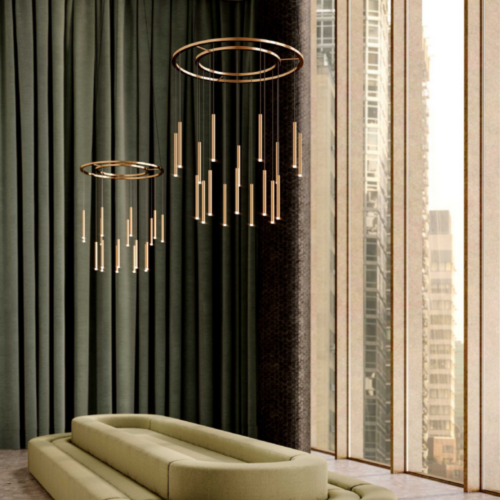The Ultimate Guide to Choosing Energy-Efficient Lighting Options

Recognizing Energy-Efficient Lights Technologies
When considering energy-efficient illumination choices, it is necessary to recognize the different modern technologies offered on the market today. LED (Light Discharging Diode) lighting stands apart as a popular option due to its high power performance and lengthy life expectancy contrasted to standard incandescent or fluorescent bulbs. LEDs consume dramatically less energy, produce less heat, and have a more prolonged operational life, making them a ecologically pleasant and cost-efficient option. Another technology to consider is CFL (Compact Fluorescent Lamp) lights, which is much more energy-efficient than incandescent bulbs yet less so than LEDs. CFLs are known for their intense light outcome and reasonably long life-span. Additionally, halogen incandescent bulbs use enhanced power effectiveness and life expectancy contrasted to standard incandescent light bulbs. Recognizing the differences in these lights technologies can assist consumers make informed decisions based upon their certain requirements, budget plan, and environmental considerations. It is important to evaluate elements such as power performance, lifespan, light top quality, and preliminary price when picking one of the most ideal energy-efficient lights innovation for a specific application.
Calculating Energy Cost Savings Possible
To examine the prospective power savings possible via the fostering of energy-efficient lighting modern technologies, it is essential to conduct comprehensive estimations based on elements such as power consumption, operational hours, and the certain qualities of the illumination options being thought about. lighting store melbourne. Calculating energy savings possible includes identifying the existing power intake of existing lighting systems and contrasting it to the forecasted energy usage of the energy-efficient choices under consideration. This comparison allows for a clear estimate of the potential power financial savings that can be understood
Operational hours play a vital function in these estimations, as lighting systems that are used for extensive periods will profit more from energy-efficient choices. Furthermore, thinking about the certain qualities of different illumination modern technologies, such as lumens per watt and lifespan, is important for accurately anticipating power savings.
## Elements to Take Into Consideration When Choosing Lights
When selecting lights choices for optimal power effectiveness and performance,Take into consideration these key aspects. To start with, analyze the illumination requirements of the room. Various locations call for differing levels of lighting intensity, color temperature, and distribution. Recognizing the purpose of the lighting will help establish one of the most suitable fixtures and light bulbs for the area.
Second of all, think about the energy performance of the lighting choices. Seek components and light bulbs with high lumens per watt (lm/W) scores to guarantee optimal light result with very little energy consumption. LED illumination, for instance, is recognized for its power efficiency and lengthy lifespan contrasted to typical incandescent or fluorescent choices.
Additionally, examine the maintenance requirements of view it now the lighting fixtures. Go with components that are very easy to tidy and maintain to make certain constant efficiency over time. Choosing sturdy components that call for marginal maintenance can help lower lasting maintenance expenses and make sure the lights system runs effectively.
Lastly, think about the ecological impact of the lighting alternatives. Select fixtures and light bulbs that are energy-efficient and ecologically pleasant, such as those with recyclable parts or minimized carbon exhausts. By prioritizing sustainability in your lighting options, you can add to a greener future while delighting in the advantages of energy-efficient illumination services.

Comparison of Different Lights Options
In evaluating the elements influencing lights option for energy efficiency and efficiency, it ends up being essential to contrast the different lighting alternatives readily available in the market. LED illumination stands out as one of the most energy-efficient choices due to its lengthy life expectancy and low power intake. When contrasting lighting options, factors such as power performance, life-span, shade temperature level, and environmental influence needs to be meticulously taken into consideration to make an educated decision based on particular lighting needs and priorities.
Tips for Executing Energy-Efficient Lights
When looking to enhance power efficiency with illumination choices, executing calculated lighting controls can significantly reduce energy consumption. One efficient tip for carrying out energy-efficient lighting is to use tenancy sensing units. These sensors find activity within an area and automatically transform lights on or off, ensuring that lights are only in operation when required. Additionally, daylight sensing units can be incorporated to change lights levels based upon natural light accessibility, more optimizing energy usage.
Dimming lights not only produces ambiance and flexibility in lighting levels but also aids conserve energy by reducing the amount of electrical energy consumed. Picking energy-efficient light bulbs such as CFLs or leds can make a significant difference in energy savings.
Final Thought
In verdict, choosing energy-efficient lighting alternatives is vital for minimizing energy intake and expenses. Implementing energy-efficient lights not only profits the webpage setting however additionally leads to long-lasting cost financial savings and improved lights high quality.
To analyze the prospective power cost savings achievable view publisher site with the adoption of energy-efficient lights technologies, it is important to carry out thorough computations based on variables such as energy usage, operational hours, and the details characteristics of the illumination options being considered (lighting store melbourne).In analyzing the factors influencing illumination choice for energy efficiency and performance, it becomes vital to compare the different lighting options available in the market. When contrasting lights choices, aspects such as energy efficiency, lifespan, shade temperature level, and ecological effect must be very carefully thought about to make a notified decision based on details lights demands and top priorities
When looking to enhance energy effectiveness via lighting choices, carrying out calculated lights controls can dramatically minimize power intake. Applying energy-efficient lighting not just benefits the setting however also leads to lasting expense savings and improved lights high quality.